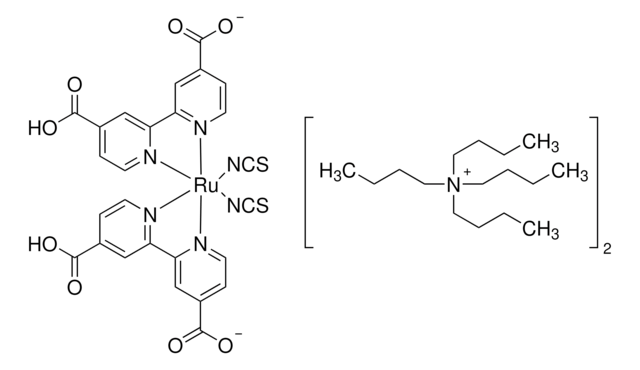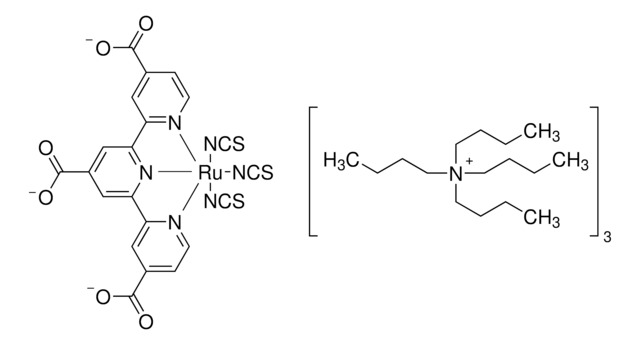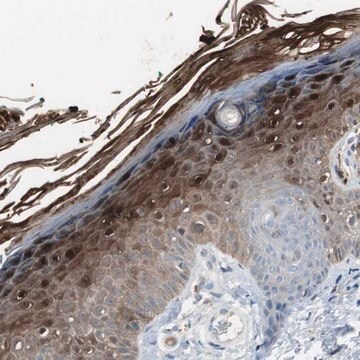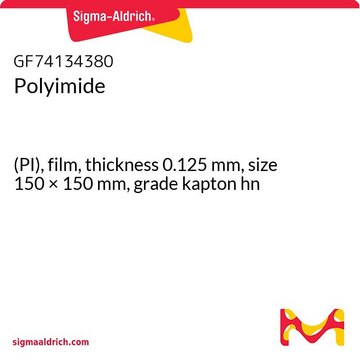791458
EL-HTE high temperature electrolyte
Synonym(s):
EL-HTE, EL-HTE electrolyte
About This Item
Recommended Products
form
liquid
conductivity
2-4 mS/cm at 20 °C
Application
- EL-HTE - High Temperature Electrolyte is a liquid electrolyte to achieve ultra-long life in DSC systems while minimising solvent evaporation.
- EL-HTE High Temperature Electrolyte has a lower vapour pressure than EL-HSE High Stability Electrolyte but is otherwise chemically very similar.
- EL-HTE High Temperature Electrolyte is particularly suitable for flexible DSC;where transparent flexible substrates do not offer the same hermetic barrier properties such as glass or metal substrates.
Legal Information
Signal Word
Danger
Hazard Statements
Precautionary Statements
Hazard Classifications
Eye Dam. 1 - Skin Irrit. 2 - STOT RE 2 Oral - STOT SE 3
Target Organs
Respiratory system, Thyroid
Storage Class Code
10 - Combustible liquids
WGK
WGK 2
Flash Point(F)
190.0 °F
Flash Point(C)
87.78 °C
Regulatory Listings
Regulatory Listings are mainly provided for chemical products. Only limited information can be provided here for non-chemical products. No entry means none of the components are listed. It is the user’s obligation to ensure the safe and legal use of the product.
PDSCL
Deleterious substance
FSL
Group 4: Flammable liquids
Type 3 petroleums
Hazardous rank III
Water insoluble liquid
ISHL Indicated Name
Substances Subject to be Indicated Names
ISHL Notified Names
Substances Subject to be Notified Names
JAN Code
791458-25ML:4548173956602
791458-BULK:
791458-5ML:4548173956619
791458-VAR:
Choose from one of the most recent versions:
Certificates of Analysis (COA)
Don't see the Right Version?
If you require a particular version, you can look up a specific certificate by the Lot or Batch number.
Already Own This Product?
Find documentation for the products that you have recently purchased in the Document Library.
Articles
Dye-sensitized solar cells (DSCs) are 3rd generation solar cells combining the promise of high efficiency with low production costs.
While dye sensitization as the basis for color photography has been accepted for a very long time,1 attempts to use this principle for the conversion of solar light to electricity generally had resulted only in very low photocurrents, below 100 nA/cm2.2
Our team of scientists has experience in all areas of research including Life Science, Material Science, Chemical Synthesis, Chromatography, Analytical and many others.
Contact Technical Service











